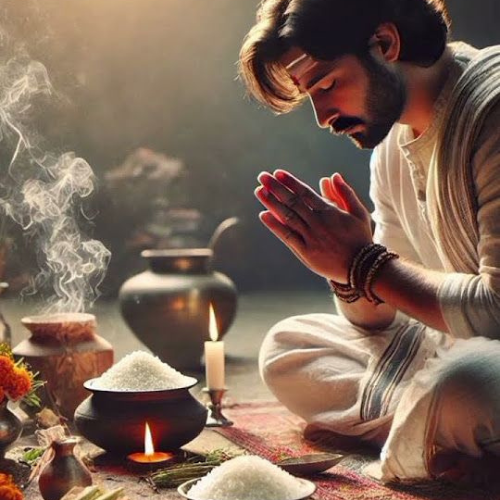A Day in the Life of the Temple Priest
Serving the Divine, Guiding the Devotees
While most devotees experience the Mandasa Vasudeva Perumal Temple for a few hours during darshan or festivals, the temple priest's day begins long before the first bell rings. His role is more than just performing rituals—he is the silent bridge between the divine and the devotee.
🌅 Early Morning: The Sacred Start
The priest usually begins his day well before sunrise. After a personal bath and prayer, he enters the temple premises around 4:30 to 5:00 AM. The first ritual is Suprabhata Seva, where the Lord is gently awakened with chants and light.
“Before anyone enters the temple, I must first greet the Lord and offer fresh water and flowers,” says Sri Rama Murthy Garu, the temple’s senior priest.
He then prepares for Alankaram—decorating the idol with fresh clothes, ornaments, flowers, and applying Tilak (Namam) in the traditional Vaishnavite style.
🔔 Morning Pujas & Devotee Interaction
By 7:00 AM, devotees begin arriving for Nitya Archana and Satyanarayana Vratam. The priest chants Sanskrit mantras from the Pancharatra Agama texts and performs Abhishekam (sacred bathing of the idol) on select days.
Throughout the morning, he answers devotees' questions, explains rituals to newcomers, and offers prasad with a smile.
“Every person comes with different worries—some with health concerns, others with family struggles. My duty is to help them feel heard and spiritually reassured.”
☀️ Midday Duties: Behind the Scenes
When the temple is quieter in the afternoon, the priest focuses on cleaning the sanctum, preparing flowers for the evening, and conducting any private homams or special sevas booked by devotees. On festival days, there's barely a moment to rest.
He also manages prasadam preparation, oversees lamp oil stock, and sometimes even guides temple volunteers.
🌇 Evening Rituals: Lighting the Lamps
Around 5:30 PM, the temple springs back to life for Sandhya Harathi (evening aarti). The priest performs Deepa Aradhana, waving oil lamps before the deity while Vedic chants fill the air. This is when many locals and tourists feel the most spiritual connection.
The aarti is followed by Sayanotsavam (putting the deity to rest), where soft bhajans are sung, and incense is offered before the sanctum is gently closed for the night.
🕯️ More Than a Duty, It’s a Life of Service
For the priest, this is not just a job. It is a lifelong commitment to serve the Lord with body, mind, and soul. His daily routine, deeply rooted in tradition and devotion, ensures that every visitor experiences the divine grace of Lord Vasudeva in its purest form.




